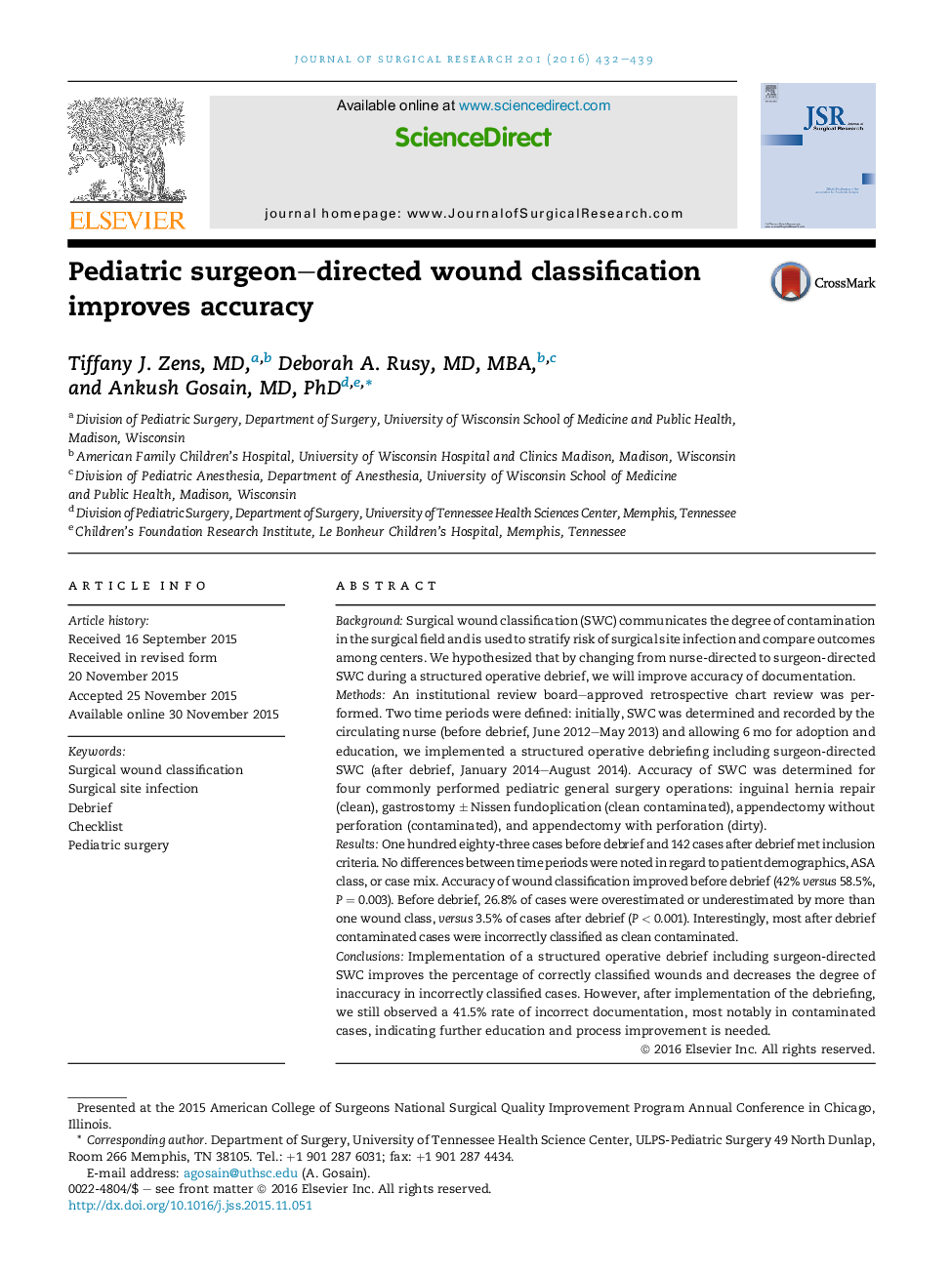| Article ID | Journal | Published Year | Pages | File Type |
|---|---|---|---|---|
| 4299395 | Journal of Surgical Research | 2016 | 8 Pages |
BackgroundSurgical wound classification (SWC) communicates the degree of contamination in the surgical field and is used to stratify risk of surgical site infection and compare outcomes among centers. We hypothesized that by changing from nurse-directed to surgeon-directed SWC during a structured operative debrief, we will improve accuracy of documentation.MethodsAn institutional review board–approved retrospective chart review was performed. Two time periods were defined: initially, SWC was determined and recorded by the circulating nurse (before debrief, June 2012–May 2013) and allowing 6 mo for adoption and education, we implemented a structured operative debriefing including surgeon-directed SWC (after debrief, January 2014–August 2014). Accuracy of SWC was determined for four commonly performed pediatric general surgery operations: inguinal hernia repair (clean), gastrostomy ± Nissen fundoplication (clean contaminated), appendectomy without perforation (contaminated), and appendectomy with perforation (dirty).ResultsOne hundred eighty-three cases before debrief and 142 cases after debrief met inclusion criteria. No differences between time periods were noted in regard to patient demographics, ASA class, or case mix. Accuracy of wound classification improved before debrief (42% versus 58.5%, P = 0.003). Before debrief, 26.8% of cases were overestimated or underestimated by more than one wound class, versus 3.5% of cases after debrief (P < 0.001). Interestingly, most after debrief contaminated cases were incorrectly classified as clean contaminated.ConclusionsImplementation of a structured operative debrief including surgeon-directed SWC improves the percentage of correctly classified wounds and decreases the degree of inaccuracy in incorrectly classified cases. However, after implementation of the debriefing, we still observed a 41.5% rate of incorrect documentation, most notably in contaminated cases, indicating further education and process improvement is needed.
